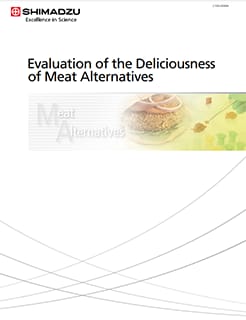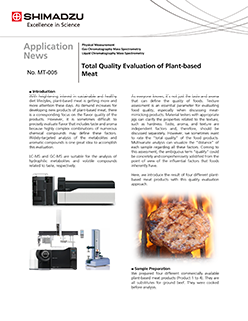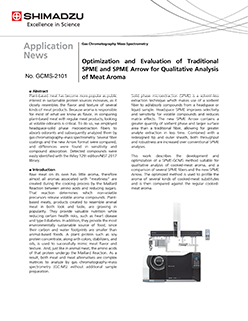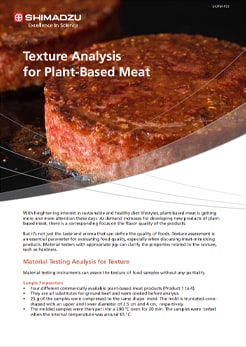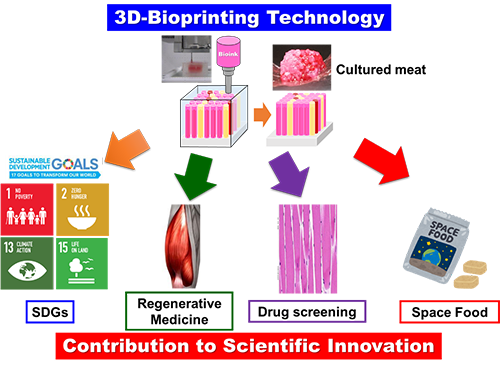Artificial Meat and Meat Alternatives
In recent years, “artificial meat”, i.e., meat that artificially reproduces the texture, flavor, and appearance of animal meat, has been developed. With heightened interest in sustainable and healthy diets and lifestyles, artificial meats are getting more and more attention. There are two types of artificial meat: “plant-based meat (PBM),” which is made mainly from vegetable proteins such as soybeans, peas and mushrooms, and “cultured meat,” which is made by culturing stem cells from animals such as cattle. Both are attracting growing interest in food markets around the world. As demand for developing more plant-based and cultured products increases, there is corresponding focus on the flavor quality of these products.
Evaluation of the Deliciousness of Meat Alternatives
According to a June 2019 report by the United Nations, the world population will increase from 7.7 billion to 9.7 billion in 2050. It states that due to rapid population growth, countermeasures against food problems such as starvation and malnutrition are urgently needed. Global meat consumption has increased 5-fold over the past 50 years and shows no sign of decreasing. It has also been reported that livestock products account for approximately 20 % of global greenhouse gas emissions, and that livestock products cause soil and water pollution.
Applications
Total Quality Evaluation of Plant-based Meat
With heightening interest in sustainable and healthy diet lifestyles, plant-based meat is getting more and more attention these days. As demand increases for developing new products of plant-based meat, there is a corresponding focus on the flavor quality of the products. However, it is sometimes difficult to precisely evaluate flavor that includes taste and aroma because highly complex combinations of numerous chemical compounds may define these factors. Widely-targeted analysis of the metabolites and aromatic compounds is one great idea to accomplish this evaluation. Here, we introduce the result of four different plant-based meat products with this quality evaluation approach.
Optimization and Evaluation of Traditional SPME and SPME Arrow for Qualitative Analysis of Meat Aroma
Plant-based meat has become more popular as public interest in sustainable protein sources increases, as it closely resembles the flavor and texture of several kinds of meat products. Because aroma is responsible for most of what we know as flavor, in comparing plant-based meat with regular meat products, looking at volatile odorants is critical. To do so, we employed headspace-solid phase microextraction fibers to absorb odorants and subsequently analyzed them by gas chromatography–mass spectrometry. Several fiber coatings and the new Arrow format were compared, and differences were found in sensitivity and compound absorption. Detected compounds were easily identified with the Wiley 12th edition/NIST 2017 library.
Texture Analysis for Plant-Based Meat
It's not just the taste and aroma that can define the quality of foods. Texture assessment is an essential parameter for evaluating food quality, especially when discussing meat-mimicking products. Material testers with appropriate jigs can clarify the properties related to the texture, such as hardness.
Articles
Osaka University, Shimadzu, and SIGMAXYZ Collaborate on 3D Bioprinting Technology
Accelerating technological development to solve social issues such as the environment, food, and health
National University Corporation Osaka University ("Osaka University"), Shimadzu Corporation ("Shimadzu"), and SIGMAXYZ Inc. ("SIGMAXYZ") have signed an agreement on collaboration for "social implementation of 3D bioprinting technology." Prior to this, Osaka University and Shimadzu Corporation also signed a joint research agreement on the development of automated production equipment for tailor-made cultured meat using 3D bioprinting.
Cultivating gourmet meat in the lab
By replicating the structure of meat, a collaboration in Japan is striving to reproduce wagyu beef synthetically.




